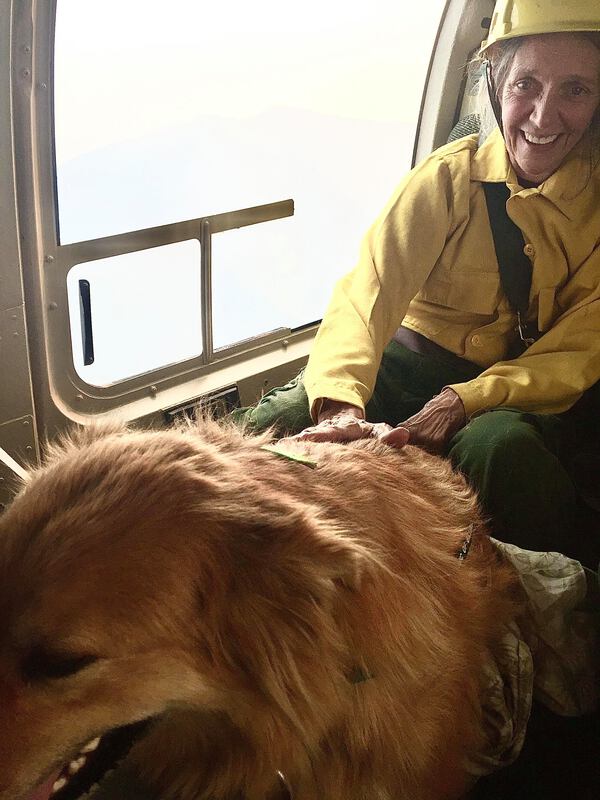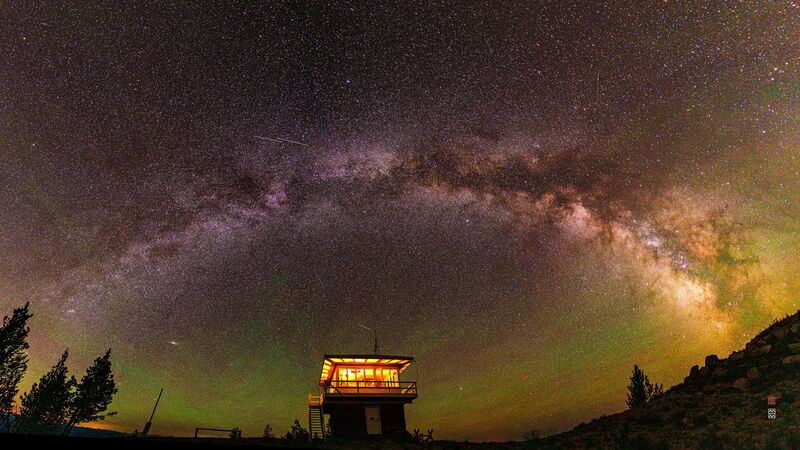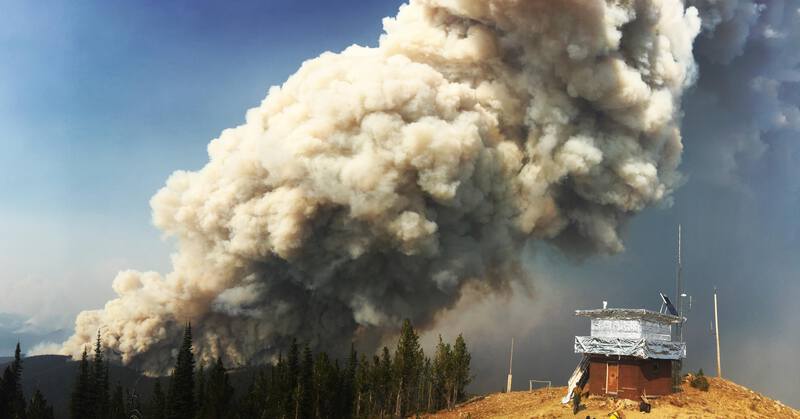Spot Mountain Lookout
Built: 1922
Status: Staffed
Cabin: R-6
R-6

This cabin is a 15x15 foot design with a flat roof that extends over the deck to provide shade. Prior to its incorporation in 1953, the L-4 was the premier live-in cabin. R-6 cabins usually replaced L-4 cabins.
Other Resources:
National Lookout Historic Register
Rex's Fire Tower Page
Spot Mountain Lookout is an actively staffed lookout in the Selway-Bitterroot Wilderness. This tower is populated by an interview with Rhett and Mark Moak who have staffed lookout towers for over forty years and have been described as “the finest eyes on the forest.” Watch the full interview to hear the Moaks discuss the daily role of lookouts, why lookouts should continue to be staffed by human beings, and being evacuated by helicopter during the 2017 Eagle Creek Fire.
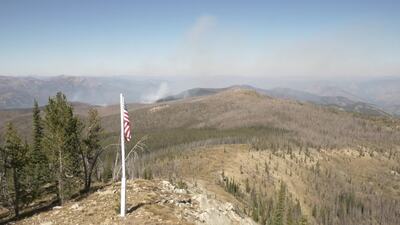
Spot Mountain
-
Item 1 of 7
00:00:00:00 - 00:00:31:09
[Mark] And you also may be able to pick up a fire, an almost 12,000 acre fire is the the Lynx fire that’s now burned onto the Bitterroot.
[Michael] Rhett, you called that in. Can you just tell us maybe what that experience is like calling that fire in?
[Rhett] Well, it is unusual because I saw it at 3:30 in the morning.
00:00:31:11 - 00:01:01:25
[Rhett] We had had a lightning storm come through, but it was so smoky you really couldn’t see any of the strikes. You were just locating them by listening. Which is kind of unusual for a lookout. Anyway, I knew there had been a strike to the northwest, and I woke up and I just was kind of looking around. I saw an orange glow and couldn’t see any flames, but just the glow.
00:01:01:25 - 00:01:31:10
[Rhett] So I tried to sight it and locate it in the dark, you know, which is always, always fun. And I thought, well, 3:30, I think I’ll try to take a look at it in the morning. So I got up early and I was totally smoked in, so I couldn’t see it at all. So I turned it in with the with the, you know, night or early morning location that I came up with in the dark.
00:01:31:10 - 00:01:56:22
[Rhett] And it was not you know, it was I felt like it was big enough as far as the glow went, that it was going to be there in the morning. And it was. So, yeah, it was pretty, pretty exciting. It’s always exciting when you see a fire. It’s always.
[Michael] So how long, as you said, they called that one in in early July.
00:01:56:24 - 00:02:33:17
[Rhett] 17th.
[Michael] So how have you watched it change? Is it more or less contained now or is it still being actively fought or…
[Rhett] Well, it’s they it was on the Nez Perce National Forest and they had a lot of activity this summer. A lot of their resources committed. And this is I don’t believe it is wilderness but on their on their side, but it borders, borders, the wilderness and not a lot of structures, you know, in that part.
00:02:33:17 - 00:03:08:04
[Rhett] And they decided to let the fire go. And it was roughly five miles from us, not too far from the border, probably, I don’t know, three miles or so from the border. And it has been very interesting. It hasn’t come this way towards the tower, which would be southwest…
[Mark] Southeast.
[Rhett] Southeast, sorry, but it has burned a lot of the Nez Perce forest.
00:03:08:04 - 00:03:45:03
[Rhett] And it… let’s see, we were recently gone for about a week and during our absence it blew up and it burned over into the Bitterroot. So and that that is what you’re seeing here, but didn’t come towards us. It went northeast of us, which is, which is great, but it is still active. And there are some resources that the Bitterroot will be responsible for, some in holdings, private ranches, Running Creek Ranch and North Star.
00:03:45:06 - 00:04:10:09
[Mark] So in its path, but there may be some moisture between now and then. Yeah. And they’re, I don’t know, probably four or five miles from those inholdings.
[Michael] And how long have you been up on this this tower for? This season or how long have we staffed this, this…
[Michael] This, this, this particular tower?
[Rhett] This is our fifth season here.
00:04:10:12 - 00:04:45:12
[Michael] So we saw some pretty recent burn scars walking out. Were you present for any of those or.
[Rhett] Yes. Yes.
[Michael] Sorry about that.
[Rhett] 2017, early September.
[Mark] Labor Day weekend wasn’t it?
[Rhett] Yes, it was Labor Day weekend and there were six fires around. I mean it’s kind of like a crescent. I had one down in Eagle Creek down below, which I really couldn’t see unless it got active and several just all the way around.
00:04:45:15 - 00:05:18:12
[Rhett] And, you know, I was just monitoring.
[Mark] I had gone back to school.
[Rhett] Yes. Mark had gone back to teach, and the conditions were, you know, kind of fall conditions where it’s kind of dry and continued to be dry. And our FMO called and said they had decided to wrap the tower and take me down and they were going to bring the wrap materials in the next morning.
00:05:18:15 - 00:05:46:09
[Rhett] And I said, Whoa, okay.
[Mark] And that’s always kind of a sad time because after they wrap your tower, you’re homeless…
[Rhett] … you’re gone. And but he said, you know, looking at the predictions, they’ve given us about five days till it with this fire, this Eagle Creek fire would get to the tower. So obviously you want to have it wrapped and people out of the way before that happens.
00:05:46:12 - 00:06:11:13
[Rhett] So a crew came up and we were in the midst of wrapping the tower. We had all the shutters up and it’s like a big baked potato when you get that, you know, wrap all over you. And the Skyler, the person that was leading the crew, said, I was in here doing something. And she said, come out here, look at this and come out.
00:06:11:13 - 00:06:39:09
[Rhett] And there there’s just tremendous flames coming up.
[Mark] We’ll show you a picture later.
[Rhett] From down, you know, in Eagle Creek. And so we had already taken the radio down and all the phone stuff and had a handheld radio and were able to get in touch with West Fork, and I explained to them that our trigger points had already been compromised.
00:06:39:09 - 00:07:09:29
[Rhett] You know, the fire’s gone beyond that. You’re not trying not to sound too alarmist or excited, but Skyler, the woman who was leading the crew, was able to get a photo to our FMO, and he sent a helicopter immediately and evacuated all of us, you know, So just finish up whatever loose ends you can we were not completely through wrapping it and we all left.
00:07:09:29 - 00:07:36:20
[Rhett] That is the first time I’ve ever been evacuated by helicopter for a fire. Yeah, for a fire. We’ve had ten. That was our ninth. Yeah, that was our ninth evacuation. ‘
[Mark] And Skyler helped out with another one in 2008 when I was up. And she’s a good person to have.
[Rhett] But yeah, talk about adrenaline.
00:07:36:24 - 00:07:59:21
[Rhett] I had my dog trying to do it. My dog on a helicopter. That was that was an interesting, um, but it was that was a little too close. You know, I don’t think any of us it was not expected at all. The Air Patrol had, you know, flown it earlier and it did not give any indication it was going to blow like that.
00:07:59:21 - 00:08:09:27
[Rhett] But it was quite impressive. But we were fortunate. The wind blew the fire just north of us.
- Title:
- The Lynx and Eagle Creek Fires
- Date Created:
- 2021-09-25
- Description:
- Rhett Moak discusses calling in the Lynx Fire and being evacuated during the Eagle Creek fire
- Subjects:
- Lynx Fire Osbourne Fire Finder Staffed Lookouts R-6 FMO false smokes legitimate smokes trigger point man-wife lookouts patrol points fire shield cover blow-up
- Location:
- Magruder Corridor
- Latitude:
- 45.78728
- Longitude:
- -114.85466
- Type:
- image;MovingImage
- Format:
- video/mp4
- Preferred Citation:
- "The Lynx and Eagle Creek Fires", Keeping Watch, Center for Digital Inquiry and Learning
- Reference Link:
- https://cdil.lib.uidaho.edu/keepingwatch/items/spot-mountain.html#spot-mountain001
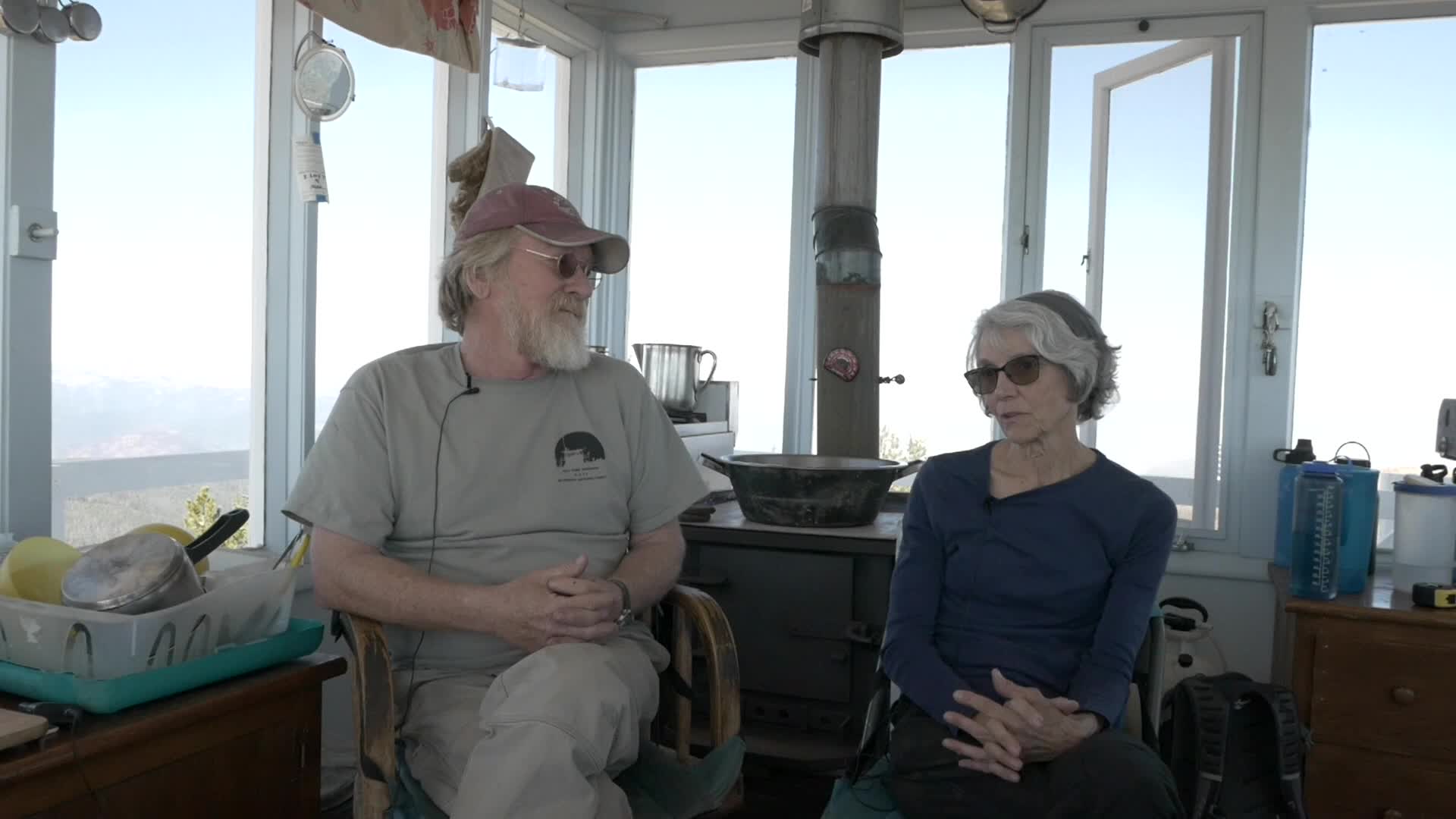
Spot Mountain
-
Item 2 of 7
00:00:00:00 - 00:00:29:01
[Rhett] The longer you are in a place you know, you know, you become very familiar with your territory, with your area. It’s like, you know, kind of you can kind of compare it to walking in your living room and, you know, there’s painting or something.
[Mark] Or the tables a little bit different or crooked.
[Rhett] And you say, Oh, look quite right.
00:00:29:01 - 00:00:54:09
And you can, you know, become so familiar. You can you can just say, oh, that’s not right. A lot of times it will be light or maybe a rock
[Mark] or a dust devil or pollen, but, you know, dust
[Rhett] You become I mean; your brain just helps you have that information. I don’t know.
[Mark] Most of the smokes we’ve seen, I would say, happened.
00:00:54:10 - 00:01:15:00
[Mark] I mean, sometimes when you’re intensely looking after a lightning storm, for sure. But smokes don’t often come and they often will come much later. I mean, we’ve had a hold over a bona fide hole over for three weeks at a time. So you can’t just, you know, hang out and not look, you have to be looking all the time.
00:01:15:00 - 00:01:39:26
[Mark] Plus the human element as well. Even though most of our smokes, the vast majority are lightning caused you know, you do have people out there and that makes a difference. You know, as Rhett was saying this, you know, you’re looking for something that’s different for the anomaly. You know, the change. And even though, you know, that’s a rock slide over there and you’ve seen it every afternoon light up with the sun, it still gets you going.
00:01:39:29 - 00:02:06:20
[Mark] You know.
[Rhett] So you get binoculars and double check.
[Mark] Also, we have some things that can confuse you are water dogs. Do you know what I mean? These columns of steam or it’s ground fog that can take on a variety of shapes. And some of those things can look just like smoke. And they’ll come up right where the lightning has been.
[Rhett] Frequently after storms have come through and you really have watch it.
00:02:06:21 - 00:02:33:19
[Mark] Right? We do. Of course, we have cell coverage up here, which is good and bad, I suppose. Back in the day, all we had was the radio, you know, and, uh. And what was your you can contact people by phone and you can get on your lightning tracker app and which I have discovered are not very accurate.
00:02:33:26 - 00:02:58:12
[Mark] They don’t jive with what we are seeing. So it’s sometimes, sometimes yes, but not all the time. So you can’t really rely on that.
[Michael] Do you think that there’s something we’re thinking about this a lot in our project is, you know, there’s an even though there are many remaining lookouts in specifically Idaho we’re thinking about, but there was once over a thousand or close to a thousand.
[Mark] Probably, yeah.
00:02:58:13 - 00:03:21:29
[Michael] Yeah. And now there’s, you know, far fewer that standing, and far fewer than that staffed now. And so, there’s obsolescence kind of occurring, you know, where the fire tower is—because of technology— becoming a little bit less essential and in some ways, right.
[Mark]. Yeah.
[Michael] And do you think that there is something lost in the transition away from the human staffed fire look?
00:03:21:29 - 00:03:51:08
[Mark] Hell yes, I do. Uh, I’m not biased or anything, you know, but I definitely do. Uh, number one, if this was if we had a webcam up here, okay, the webcam is not talking to you right now, by the way you know, or any other visitor who might come, come through. Plus, somebody has got to be reading that somewhere in an office, perhaps, uh, uh, there’s something about about being up here.
00:03:51:08 - 00:04:12:09
[Mark] There is kind of a feel that you get, you know, as, as we’ve spoken earlier for the forest and that can use technology. We use the radio, you know, we use the cell phone, we do that and we, I will we will look at the lightning tracker, the radar for sure to see what’s coming. You know where it is.
00:04:12:09 - 00:04:34:07
[Mark] But, uh, you know, but I think those things in… there are satellites, there’s an infrared flight, we have one last night that comes over and checks out the boundaries of the fire. We’ll look at that for sure. And I think that, you know, we have the fire finder, the Osborne Firefighter right there, which has been popular since the thirties, I believe.
00:04:34:09 - 00:04:57:15
[Mark] That wasn’t always around. You know, we’ll use that. And binoculars, too. I mean, it’s and better and better binoculars for sure. But I think that, you know, if you take away, can you really remove the human element from it, you know, from this whole idea of of detecting fires? Not really. Somebody has got to be, you know, watching somewhere.
00:04:57:18 - 00:05:15:22
[Mark] And I just think it’s so much better, you know, up here at a tower. Are there risks? Yeah. I mean, you know, because you could fall down the stairs, you know, or, uh, but I think it’s personally, particularly in this day and age, it’s one of the best places in the world to be—talk about social distancing.
00:05:15:24 - 00:05:44:10
[Mark] But, uh, but no, I think, I think that, you know, there are, there are some traditions that, that we have in the various institutions in our country. And I, I think with the Forest Service that the lookout, you know, the pack train, you know, the packer who still have, you know, knows the art of packing animals and managing animals.
00:05:44:13 - 00:06:23:02
[Mark] Those traditions are valuable and worth keeping asking them for. I don’t know. What do you think?
[Rhett] Well I think so and lookouts main job of course is reporting fires but you also serve as communication in backcountry situations for people working our, you know, in remote areas. So that’s another function.
[Mark] There’s not constant radio coverage everywhere out here. You can be, you know, in a you know, in a valley somewhere, a canyon that you’re not going to be able to get out.
00:06:23:07 - 00:06:52:05
[Rhett] and also you if you have people on a fire, you have eyes, you know, on the fire, you know where people are. So, you can alert people on a fire to the incoming weather, any kind of changes that you happen to see, maybe a fire gets really active in an area that you need to let people that are actually on the ground working…
00:06:52:08 - 00:07:14:26
[Rhett]…know, that’s dangerous. You know, there are other aspects to the job other than spotting and reporting fires.
[Mark] Trail crews, too. We had one when we were in in 2013, after the or during the Gold Pan Fire, we got moved over to Salmon Mountain Lookout and had a trail crew out and they were unaware of a fire coming in from the Nez.
00:07:14:26 - 00:07:49:12
[Mark] And, uh,
[Rhett] They were sending them to camp at a cabin that was…
[Mark] very close to the advancing fire. In 2003, uh, we were at Hell’s half, and, uh, and our daughter was a firefighter. I think it was her first year as a firefighter. Our eldest daughter. And we were listening to the Salmon in a fire. They had several, about seven fires going on down there, and one of them was called the Cramer Fire just over the border, maybe, I don’t know, 20 air miles away.
00:07:49:12 - 00:08:13:13
[Mark] And and we listened as a series of events unfolded and and two helitech guys got burned up. And, uh, it was horrible. And our daughter was on a fire just just to the east of us and getting ready to go into a another fire that was blowing up. And we’ve always felt a responsibility for for firefighters.
00:08:13:13 - 00:08:45:25
[Mark] But on the ground, and particularly in fires that are in our area. But I’ll tell you, when you have one of your own out there, it really makes you think about it even more. And that’s as Rhett was saying, that’s one of our, I think, greatest responsibilities up here and a satellite is not going to help those guys, you know, uh, and anyway, so, yeah, we think it’s it’s worth having the tower up here and people staffing it.
- Title:
- What is Lost in the Transition Away from the Human Staffed Lookout?
- Date Created:
- 2021-09-25
- Description:
- The Moaks discusses what is lost as the Forest Service and other agencies move away from lookout use.
- Subjects:
- Staffed Lookouts legitimate smokes trigger point man-wife lookouts patrol points blow-up water dog
- Location:
- Magruder Corridor
- Latitude:
- 45.78728
- Longitude:
- -114.85466
- Type:
- image;MovingImage
- Format:
- video/mp4
- Preferred Citation:
- "What is Lost in the Transition Away from the Human Staffed Lookout?", Keeping Watch, Center for Digital Inquiry and Learning
- Reference Link:
- https://cdil.lib.uidaho.edu/keepingwatch/items/spot-mountain.html#spot-mountain002
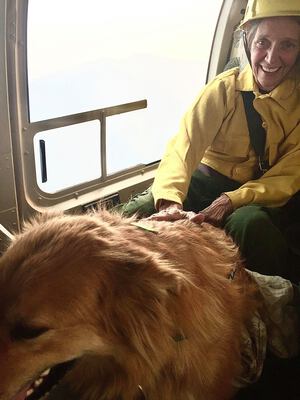
Spot Mountain
-
Item 3 of 7
- Title:
- Eagle Creek Fire Evacuation
- Date Created:
- 2021-09-25
- Description:
- Photo of Rhett Moak and her dog being evacuated during the Eagle Creek Fire
- Subjects:
- eagle creek fire Osbourne Fire Finder Staffed Lookouts R-6
- Location:
- Magruder Corridor
- Latitude:
- 45.78728
- Longitude:
- -114.85466
- Type:
- image;stillimage
- Format:
- image/jpeg
- Preferred Citation:
- "Eagle Creek Fire Evacuation", Keeping Watch, Center for Digital Inquiry and Learning
- Reference Link:
- https://cdil.lib.uidaho.edu/keepingwatch/items/spot-mountain.html#spot-mountain003
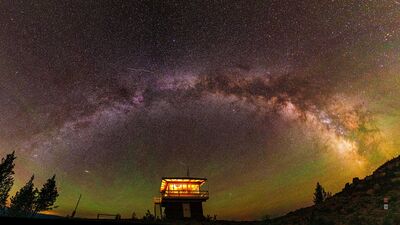
Spot Mountain
-
Item 4 of 7
- Title:
- Spot Mountain Lookout at Night
- Date Created:
- 2021-09-25
- Description:
- Photo by Mark Moak of Spot Mountain Lookout under the Milky Way
- Subjects:
- Staffed Lookouts R-6 milky way galaxy
- Location:
- Magruder Corridor
- Latitude:
- 45.78728
- Longitude:
- -114.85466
- Type:
- image;stillimage
- Format:
- image/jpeg
- Preferred Citation:
- "Spot Mountain Lookout at Night", Keeping Watch, Center for Digital Inquiry and Learning
- Reference Link:
- https://cdil.lib.uidaho.edu/keepingwatch/items/spot-mountain.html#spot-mountain004
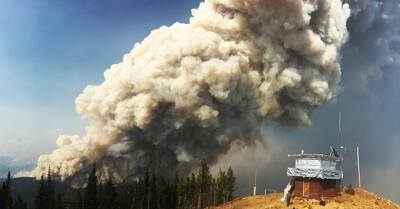
Spot Mountain
-
Item 5 of 7
- Title:
- Spot Mountain Fire Lookout Wrapped in Protective Material During the Eagle Creek Fire
- Date Created:
- 2021-09-25
- Description:
- Photo of Spot Mountain Wrapped in Fire Resistant Material During the Eagle Creek Fire
- Subjects:
- eagle creek fire Staffed Lookouts R-6 fire shield blow-up
- Location:
- Magruder Corridor
- Latitude:
- 45.78728
- Longitude:
- -114.85466
- Type:
- image;stillimage
- Format:
- image/jpeg
- Preferred Citation:
- "Spot Mountain Fire Lookout Wrapped in Protective Material During the Eagle Creek Fire", Keeping Watch, Center for Digital Inquiry and Learning
- Reference Link:
- https://cdil.lib.uidaho.edu/keepingwatch/items/spot-mountain.html#spot-mountain005

Spot Mountain
-
Item 6 of 7
- Title:
- Mark and Rhett Moak - Full Interview
- Date Created:
- 2021-09-25
- Description:
- Full interview of Mark and Rhett Moak
- Subjects:
- magruder Corridor Selway-Bitterroot Wilderness Selway River Lynx Fire eagle creek fire Osbourne Fire Finder Nez-Perce Clearwater National Forest Staffed Lookouts R-6 pack train
- Location:
- Magruder Corridor
- Latitude:
- 45.78728
- Longitude:
- -114.85466
- Type:
- image;MovingImage
- Format:
- video/youtube
- Preferred Citation:
- "Mark and Rhett Moak - Full Interview", Keeping Watch, Center for Digital Inquiry and Learning
- Reference Link:
- https://cdil.lib.uidaho.edu/keepingwatch/items/spot-mountain.html#spot-mountain006
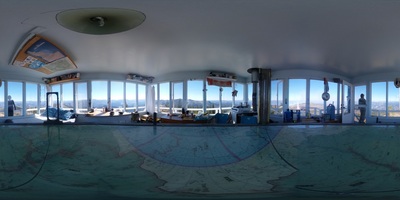
Spot Mountain
-
Item 7 of 7
- Title:
- Spot Mountain 360 Degree Image
- Date Created:
- 2021-09-25
- Description:
- 360 Image of the Spot Mountain Fire Lookout Tower
- Subjects:
- osborne fire finder horse hair sight rotating sight ring seen area systematic observation township range r-6
- Location:
- Magruder Corridor
- Latitude:
- 45.78728
- Longitude:
- -114.85466
- Type:
- image;panorama
- Format:
- image/jpeg
- Preferred Citation:
- "Spot Mountain 360 Degree Image", Keeping Watch, Center for Digital Inquiry and Learning
- Reference Link:
- https://cdil.lib.uidaho.edu/keepingwatch/items/spot-mountain.html#spot-mountain007

